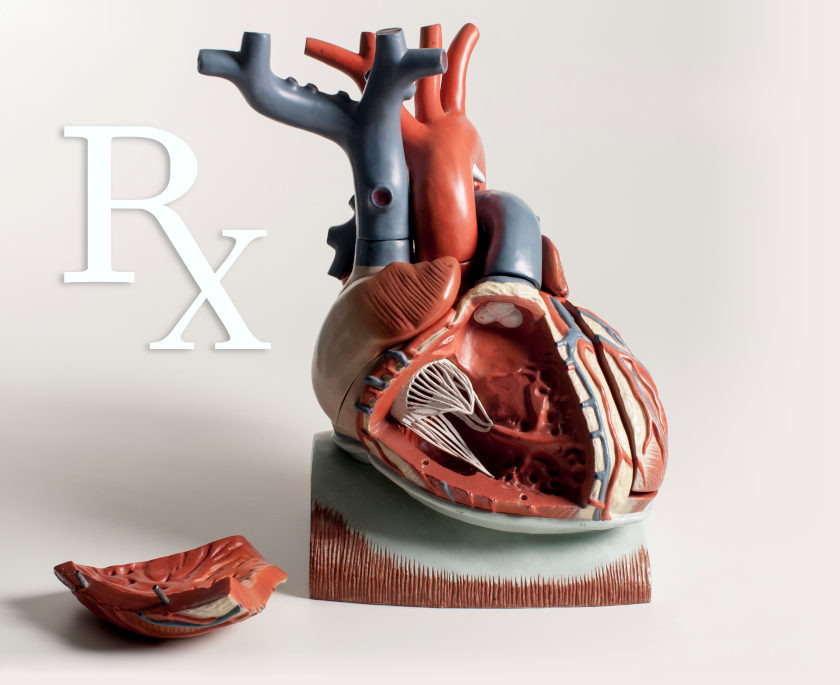Causes of Arrhythmias
- Page 1: Normal Heart Rhythm
- Page 2: Types of Arrhythmias
- THIS PAGE: Causes of Arrhythmias
- Page 3: Antiarrhythmic Drugs
Bradycardia
Sinus bradycardia (<60 beats/min) results from reduced SA nodal firing rate. This can occur because of excessive vagal stimulation (e.g., during fainting) or because of damage to the SA node (e.g., damage caused by ischemia or disease). Ventricular bradycardia usually occurs because of AV block, which leads to the expression of a pacemaker site within the ventricles that fires at a slow rate (30-40 beats/min).
Tachycardia
Sinus tachycardia (100-180 beats/min) most commonly results from excessive sympathetic nerve stimulation of the SA node or high circulating levels of catecholamines (e.g., pheochromocytoma). Sinus tachycardia that occurs during exercise, for example, is physiologic and normal, and in young people can exceed 180 beats/min. However, sinus tachycardia at rest is not normal. Atrial (non-sinus) tachycardia can occur because of either an ectopic foci firing at a high frequency or to reentry mechanisms within the atria. Both mechanisms may be stimulated by ischemia and increased sympathetic activity.
Supraventricular tachycardia caused by global reentry involves an abnormal conduction pathway. For example, accessory pathways between the right atrium and right ventricle (Bundle of Kent) can cause Wolff-Parkinson-White syndrome. Reentry within the AV node can also precipitate a supraventricular tachycardia. Reentry mediated tachycardias can be triggered by elevated sympathetic activity, which alters conduction velocity within the cardiac tissue and the effective refractory period of action potentials. In some forms of heart disease, ventricular and or atrial dilation occurs, which can lead to tachyarrhythmias or premature beats.
Ventricular tachycardias are caused by aberrant ventricular automaticity (ventricular foci) or by intraventricular reentry circuits. They can be sustained or non-sustained (paroxysmal) and are commonly characterized by a widened QRS complex in the ECG because of abnormal ventricular conduction. These types of tachyarrhythmias can be life-threatening.
Fibrillation is usually caused by diseased, ischemic myocardium.
Premature Beats
Atrial and ventricular premature beats are characterized as premature atrial complexes (PAC) or premature ventricular complexes (PVC) on the electrocardiogram. These premature beats can be caused by disturbances that increase the excitability of cardiac cells. Stretching of the tissue and ischemia are common causes. Increased sympathetic activity and circulating catecholamines can also precipitate premature beats.
Conduction Blocks
AV conduction blocks can occur during excessive vagal stimulation or removal of normal sympathetic influences on the AV node, which tips the autonomic balance toward a more dominant vagal influence. This can occur, for example, because of excessive beta1-adrenoceptor blockade. The most common cause of AV conduction blocks is changes in the electrophysiological properties of the specialized cells within the AV node and Bundle of His. Cellular damage caused by ischemia, trauma, infection or inflammation, or degenerative changes caused by age or disease can lead to AV conduction blocks. These same mechanisms (except for vagal) can cause conduction blocks in other regions of the conduction system, such as the bundle branches.
Go to Next Page
Antiarrhythmic Drugs
Revised 11/29/2023

 Cardiovascular Physiology Concepts, 3rd edition textbook, Published by Wolters Kluwer (2021)
Cardiovascular Physiology Concepts, 3rd edition textbook, Published by Wolters Kluwer (2021) Normal and Abnormal Blood Pressure, published by Richard E. Klabunde (2013)
Normal and Abnormal Blood Pressure, published by Richard E. Klabunde (2013)